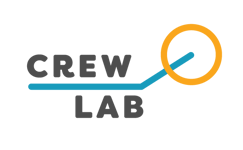In 2006-2008, I was a graduate assistant rowing coach at Marietta College. I remember an athletic department meeting where AD Larry Hiser voiced the words that helped shape my educational philosophy: “Don’t be a roll out of bed and put a hat on coach.” I shared a few laughs at this statement with some of my fellow GAs, because that’s certainly what we did on some Saturday mornings. However, the statement stuck with me as I progressed through my career, and it began to define how I viewed the coaching profession. There is definitely space for those who just devote a few hours to help out with their local youth league, or maybe coach a masters workout on the weekend.
As a scholastic or collegiate head coach, we are institutional agents, student success specialists. Students might have a teacher one year or professor one quarter with whom they connect, but then they move on. As the varsity coach at my program, I see these students throughout the better part of three years. It’s important to note that the coach-athlete relationship consists of high quality time, not just a before or after school activity. For many collegiate rowers, it is the most important thing they do. It’s what brings them back to campus on alumni day. It’s how they identify with their institution.
I’ve thought about how I view my role, and I can divide it into three distinct developmental phases over the years:
I often think about how access to our program is restricted. Who has access to our program? What environmental variables restrict access? Are there institutional variables that restrict access? What can we do to ensure/increase access? This is not just limited to sports programs – the topic of access is relevant to education, health care, decision making. When is it appropriate to involve athletes in decision-making processes?
It makes sense to consider how you view your role and how it is viewed by your institution. A lot of that stems from how you present yourself and how you represent your program to the institution. It might take some self-promotion and marketing efforts to fully showcase the significance of truly leading a team, and not simply rolling out of bed and putting on a hat.
As a scholastic or collegiate head coach, we are institutional agents, student success specialists. Students might have a teacher one year or professor one quarter with whom they connect, but then they move on. As the varsity coach at my program, I see these students throughout the better part of three years. It’s important to note that the coach-athlete relationship consists of high quality time, not just a before or after school activity. For many collegiate rowers, it is the most important thing they do. It’s what brings them back to campus on alumni day. It’s how they identify with their institution.
I’ve thought about how I view my role, and I can divide it into three distinct developmental phases over the years:
- As a novice coach, it was about making a boat go fast
- Taking over a program, it was about building a team
- Been at it a few years now, it’s about setting each member up for future success and those other things (in addition to making boats go fast)
I often think about how access to our program is restricted. Who has access to our program? What environmental variables restrict access? Are there institutional variables that restrict access? What can we do to ensure/increase access? This is not just limited to sports programs – the topic of access is relevant to education, health care, decision making. When is it appropriate to involve athletes in decision-making processes?
It makes sense to consider how you view your role and how it is viewed by your institution. A lot of that stems from how you present yourself and how you represent your program to the institution. It might take some self-promotion and marketing efforts to fully showcase the significance of truly leading a team, and not simply rolling out of bed and putting on a hat.

